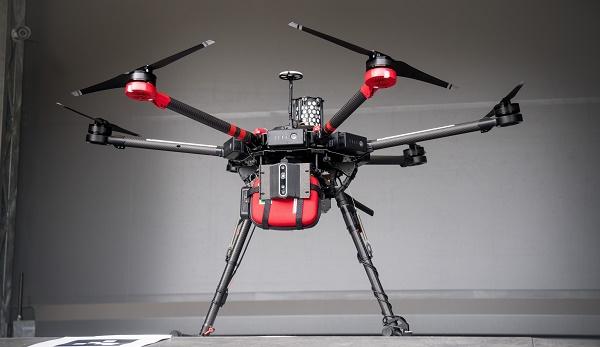AED Drone Delivery Shaves Ambulance Time in OHCA
This model will likely be most effective in cities, but the potential for reaching patients in rural areas remains, researcher says.

AED-equipped drone from Schierbeck/Everdrone (Photo Credit: Everdrone)
Dispatching drones to out-of-hospital cardiac arrest (OHCA) patients is feasible and can shave off nearly 2 minutes of time to delivery of automated external defibrillators (AEDs) compared with traditional ambulances, according to a new Swedish study.
“Early defibrillation is critical for the chance of survival in cardiac arrest patients,” said Sofia Schierbeck, MD (Karolinska Institutet, Stockholm, Sweden), who presented the results during a dedicated session on sudden cardiac death at the European Society of Cardiology Congress 2021. “Each minute counts, and it's mostly in the early minutes that we want to make a difference because that can increase the chance of survival.”
The study, simultaneously published in the European Heart Journal, follows an earlier report by the same group showing the feasibility of using drones to deliver AEDs in remote places.
For this analysis, Schierbeck and colleagues collaborated with emergency medical services (EMS) in Gothenburg, Sweden, to equip three specialized drones (Everdrone AB) with AEDs to complement standard ambulance care in a controlled airspace of 125 square kilometers encompassing about 80,000 residents between June and September 2020. Cases were excluded for patients younger than 8 years old, trauma, and those witnessed by EMS. Additionally, drones were not dispatched during dark, rainy, or high-wind conditions; around high-rise buildings; in no-fly zones; or outside the service area.
We believe that in a few years, drones used to deliver emergency medical equipment such as AEDs could be common practice and this could in theory save thousands of lives each year, which would be amazing. Sofia Schierbeck
In total, 14 real-life cases of suspected OHCA were eligible for drone dispatch, with 12 (86%) resulting in successful takeoff (median distance 3.1 km) and 11 (92%) in successful delivery, in which drones arrived within a median of 9 m from the patient. Rain was the primary reason prohibiting delivery. Drones arrived before ambulances 64% of the time, with a median time benefit of 1 min 52 s, but no AEDs were attached before the ambulances arrived.
Additionally, the researchers conducted 61 random flight tests during the course of the study, achieving a successful AED delivery rate of 90%.
During a press conference, co-moderator Steen Dalby Kristensen, MD (Aarhus University Hospital, Denmark), emphasized the importance of the potential time-savings offered by a drone-based system over ambulances. “Two minutes is really quite important,” he said. “Every second counts.”
Schierbeck told TCTMD that implementation of a system like this would look different in various cities dependent on the way local EMS were set up. However, she emphasized, it would take coordination between specially trained drone pilots and emergency-response teams no matter what.
“The reason why we tested the drone model in a semi-urban area was because of the relatively high incidence and the longer response times of the ambulance,” Schierbeck said. “In cities, the incidence is high but the response time for the ambulances is short. Also, publicly available AEDs are common in city areas. In rural areas, the response time is long but the incidence is so low that it could be argued that drones would be used to seldom to be considered worth it.”
Still, there is potential for drones to fly longer distances in the future, in which case a model like this might be more relevant for rural areas, she continued. “In specific cases, a drone could be lifesaving in remote settings where the time to arrival of ambulances is long, and I can definitely see that happening in the future.”
Furthermore, Schierbeck said, “we believe that in a few years, drones used to deliver emergency medical equipment such as AEDs could be common practice and this could in theory save thousands of lives each year, which would be amazing.”
Her team has started a larger study with four drones evaluating the primary endpoint of time saved compared with ambulance models.
Yael L. Maxwell is Senior Medical Journalist for TCTMD and Section Editor of TCTMD's Fellows Forum. She served as the inaugural…
Read Full BioSources
Schierbeck S, Hollenberg J, Nord A, et al. Automated external defibrillators delivered by drones to patients with suspected out-of-hospital cardiac arrest. Eur Heart J. 2021;Epub ahead of print.
Disclosures
- This study was funded by the Swedish Heart-Lung Foundation.
- Schierbeck and Kristensen report no relevant conflicts of interest.





Comments